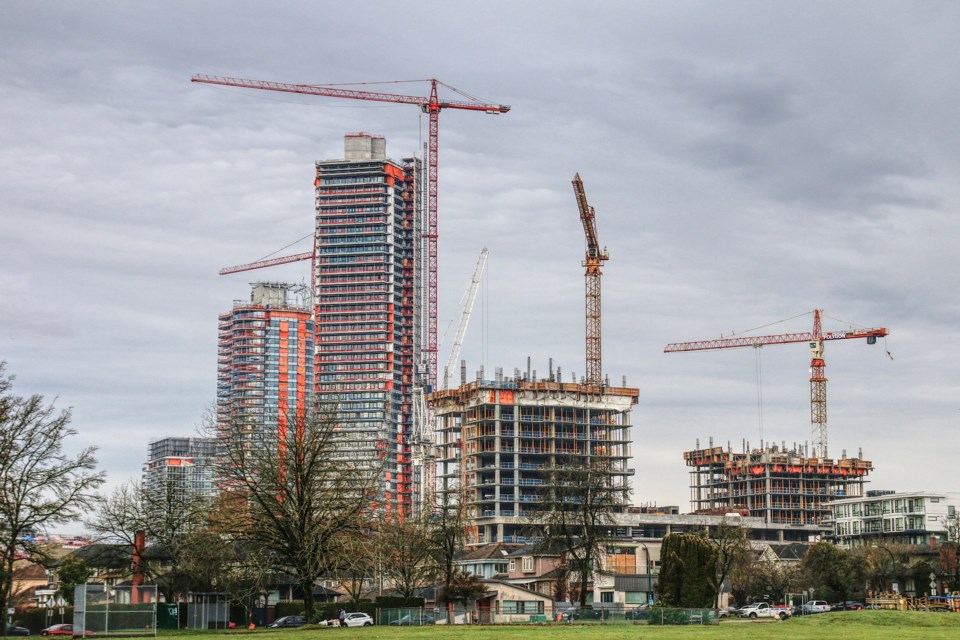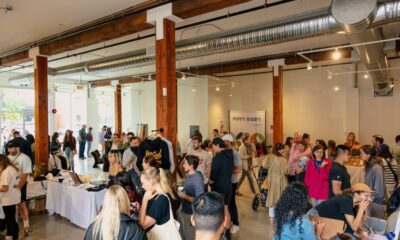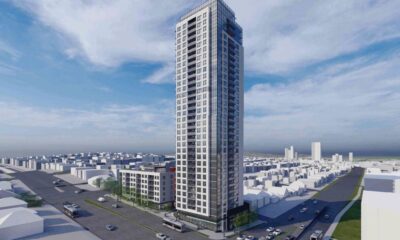World
Retail Vacancy Steady in Metro Vancouver Despite Economic Pressures

Demand for retail space in Metro Vancouver remains robust, but a recent report suggests challenges lie ahead for new inventory. According to a report by commercial real estate firm CBRE Ltd., the retail market is currently supported by anchor tenants, apparel stores, and quick-service restaurants. However, the slower pace of residential construction could hinder future supply.
The report, released on August 21, 2023, forecasts that net asking rental rates will remain stable over the next six months across various formats and key urban areas. Despite this stability, there are concerns regarding population growth and economic factors affecting the retail sector. “Lagging population growth coupled with a slower economy is directly impacting the mixed-use development pipeline, from which the retail market is reliant upon for new inventory,” the report states.
Current Trends in Retail Demand
Adrian Beruschi, a senior vice-president at CBRE based in Vancouver, emphasizes the need for new retail spaces to align with the increasing density in the region. “We’re seeing four-storey, six-storey, 12-storey mixed-use projects, and with that type of density, you need retail to service those residents,” he explains. This synergy has been beneficial for the past five years, but Beruschi expresses concern about the future. “I just see a lot of projects slowing down or flatlining or not getting built at all.”
Consumer behavior also poses a challenge, as tighter discretionary spending is influencing retail dynamics. While shoppers continue to visit stores, their purchasing habits may be evolving. “Maybe everyone’s not carrying three bags of shopping and clothing, and maybe they are just walking around with one, or just window shopping and buying online,” Beruschi adds.
Vacancy Rates and Future Opportunities
Despite these challenges, the retail landscape in Vancouver is characterized by low vacancy rates. The retail vacancy rate for shopping centres in the second quarter was 2.4 percent, significantly lower than the national average of 4.2 percent. Factors contributing to this resilience include suburban strength, food and beverage sectors, grocery stores, and athleisure apparel. Notably, new brands and international retailers are eyeing coveted locations, although many are waiting for the right opportunities.
The anticipated closure of Hudson’s Bay Co. stores will release approximately one million square feet of retail space throughout the region, creating new prospects for retailers. Adam Jacobs, head of research at real estate firm Colliers Canada, highlights the difficulties in developing new retail spaces due to high land costs. “People aren’t going to build a brand new retail plaza a mile down the road from you and then you lose all your tenants because that’s newer and shinier,” he states.
Retail properties are increasingly viewed as a “defensive” strategy for investors, offering stability and potential for redevelopment. Jacobs notes that while retail does not promise significant upside, it provides a safe investment with essential services. “You buy a suburban plaza; it has a grocery store and a pharmacy and a Starbucks and some kind of safe tenants that aren’t going anywhere,” he explains. With uncertainty in the office and industrial sectors, retail properties appear increasingly attractive to investors.
As Metro Vancouver navigates these complex dynamics, the interplay between demand, supply, and consumer behavior will continue to shape the retail landscape in the region.
-

 Politics4 weeks ago
Politics4 weeks agoSecwepemc First Nation Seeks Aboriginal Title Over Kamloops Area
-

 World5 months ago
World5 months agoScientists Unearth Ancient Antarctic Ice to Unlock Climate Secrets
-

 Entertainment5 months ago
Entertainment5 months agoTrump and McCormick to Announce $70 Billion Energy Investments
-

 Science5 months ago
Science5 months agoFour Astronauts Return to Earth After International Space Station Mission
-

 Lifestyle5 months ago
Lifestyle5 months agoTransLink Launches Food Truck Program to Boost Revenue in Vancouver
-

 Technology3 months ago
Technology3 months agoApple Notes Enhances Functionality with Markdown Support in macOS 26
-

 Lifestyle3 months ago
Lifestyle3 months agoManitoba’s Burger Champion Shines Again Amid Dining Innovations
-

 Top Stories2 months ago
Top Stories2 months agoUrgent Update: Fatal Crash on Highway 99 Claims Life of Pitt Meadows Man
-

 Politics4 months ago
Politics4 months agoUkrainian Tennis Star Elina Svitolina Faces Death Threats Online
-

 Sports5 months ago
Sports5 months agoSearch Underway for Missing Hunter Amid Hokkaido Bear Emergency
-

 Politics5 months ago
Politics5 months agoCarney Engages First Nations Leaders at Development Law Summit
-

 Technology5 months ago
Technology5 months agoFrosthaven Launches Early Access on July 31, 2025




















